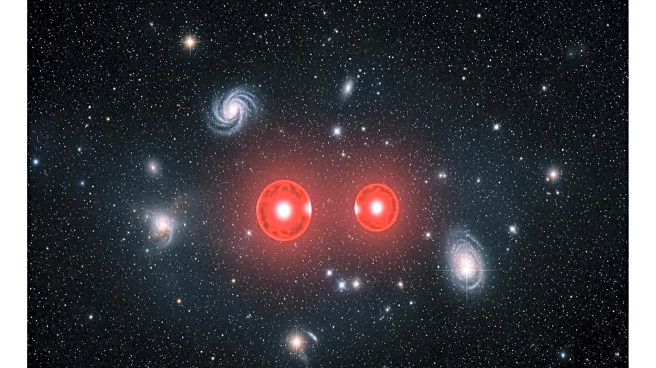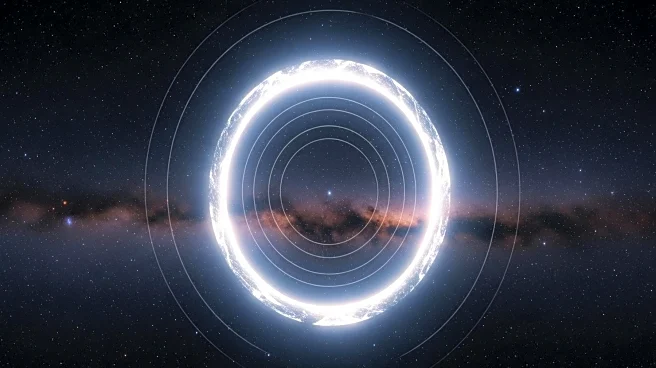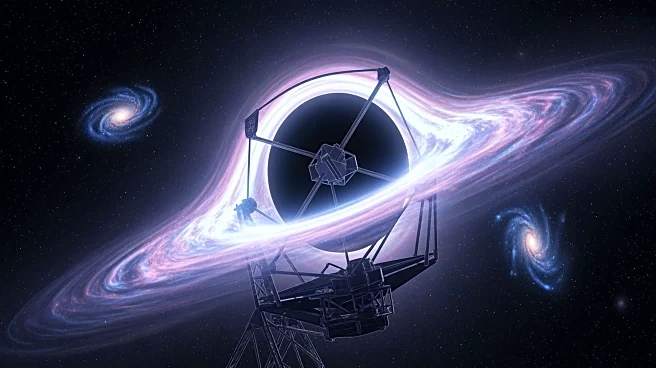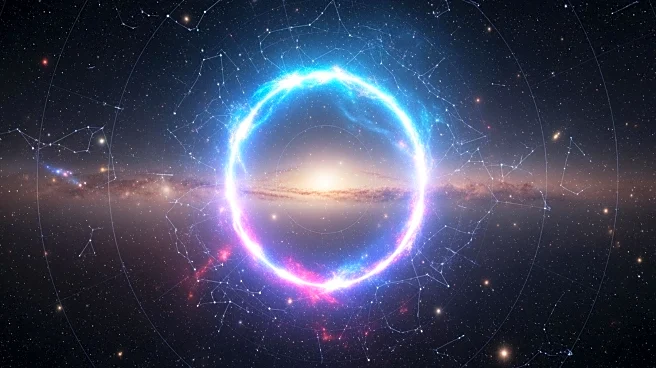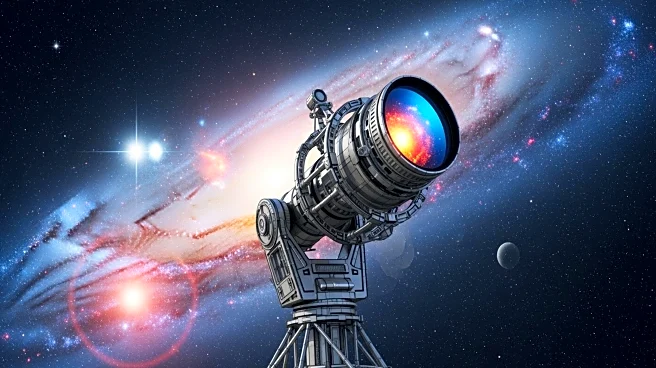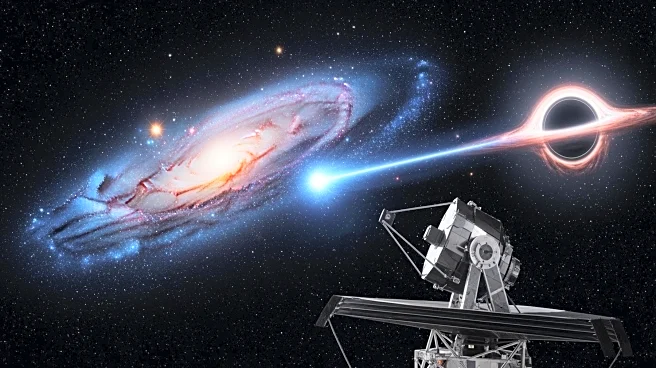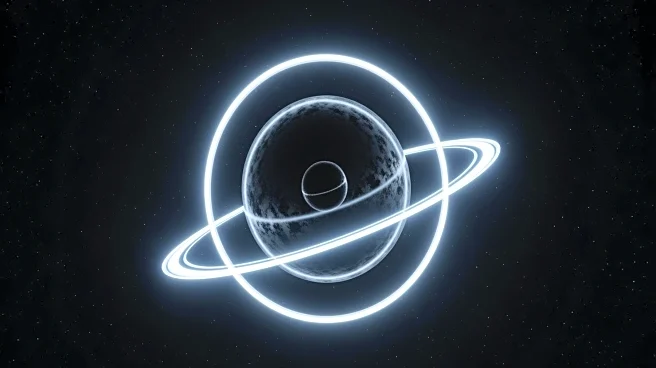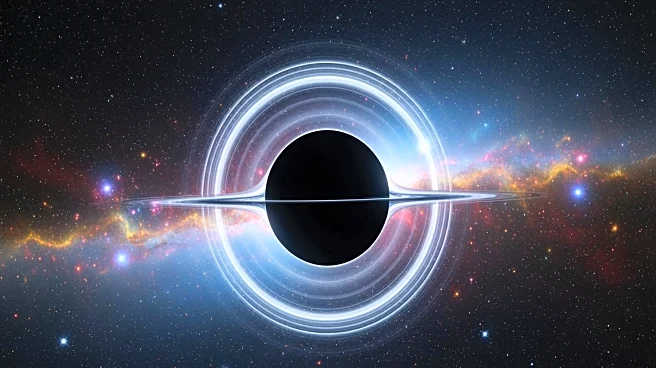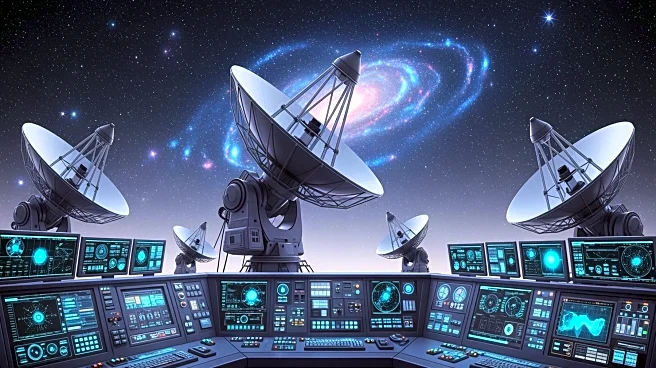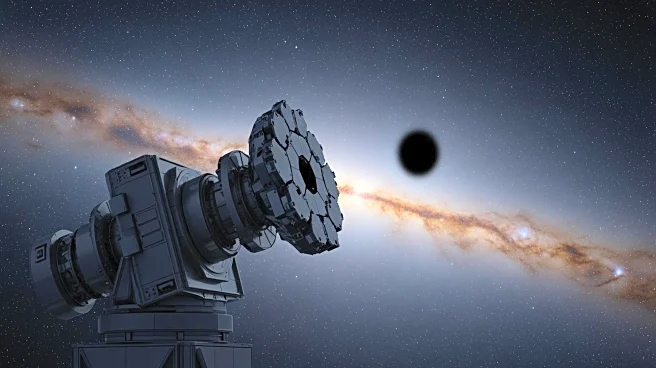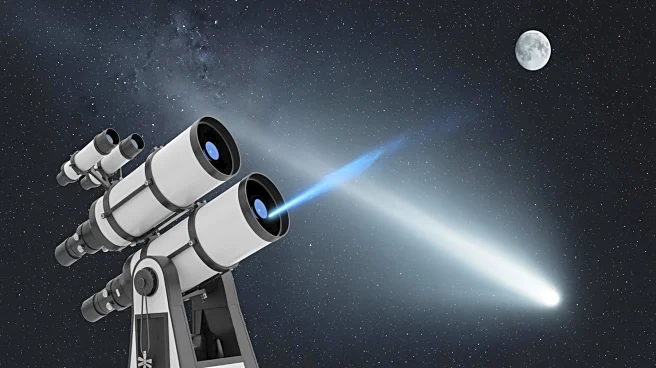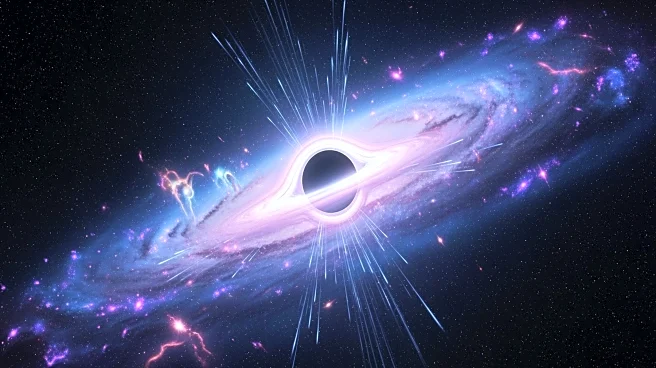What's Happening?
Astronomers have been puzzled by the discovery of 'little red dots' in the early universe, observed by the James Webb Space Telescope (JWST). These dots, emitting long red wavelengths, were initially thought to be galaxies or black holes but did not fit
the characteristics of either. Recent studies suggest these dots are a new type of celestial object, possibly a hybrid between a black hole and a star. This phenomenon, described as a black hole wrapped in a cocoon of hot, dense gas, challenges existing astronomical theories. Researchers are investigating whether these objects existed only in the ancient universe or if they are present in more modern cosmic stretches.
Why It's Important?
The identification of these 'little red dots' as a new type of celestial object could significantly impact our understanding of the universe's formation and evolution. This discovery challenges existing models and theories about the early universe, potentially leading to new insights into cosmic phenomena. The implications for astrophysics are profound, as it may redefine how scientists view the interactions between black holes and surrounding matter. This could also influence future research directions and the development of new models to explain the universe's history and structure.
What's Next?
Researchers are continuing to study these 'little red dots' to understand their formation and evolution. There is ongoing debate about whether these objects could become the centers of galaxies. Further observations and studies are expected to provide more clarity on their role in the universe. The scientific community is likely to focus on how these objects interact with dark matter and their potential presence in the modern universe. As more data becomes available, astronomers will refine their theories and models to incorporate these findings.
Beyond the Headlines
The discovery of these 'little red dots' raises questions about the fundamental nature of celestial objects and the processes that govern their formation. It challenges the traditional understanding of black holes and stars, suggesting a more complex interaction between these entities. This could lead to a reevaluation of cosmic evolution theories and the role of dark matter in shaping the universe. The ethical dimension involves ensuring that scientific research continues to explore these phenomena without bias, fostering a deeper understanding of the cosmos.
